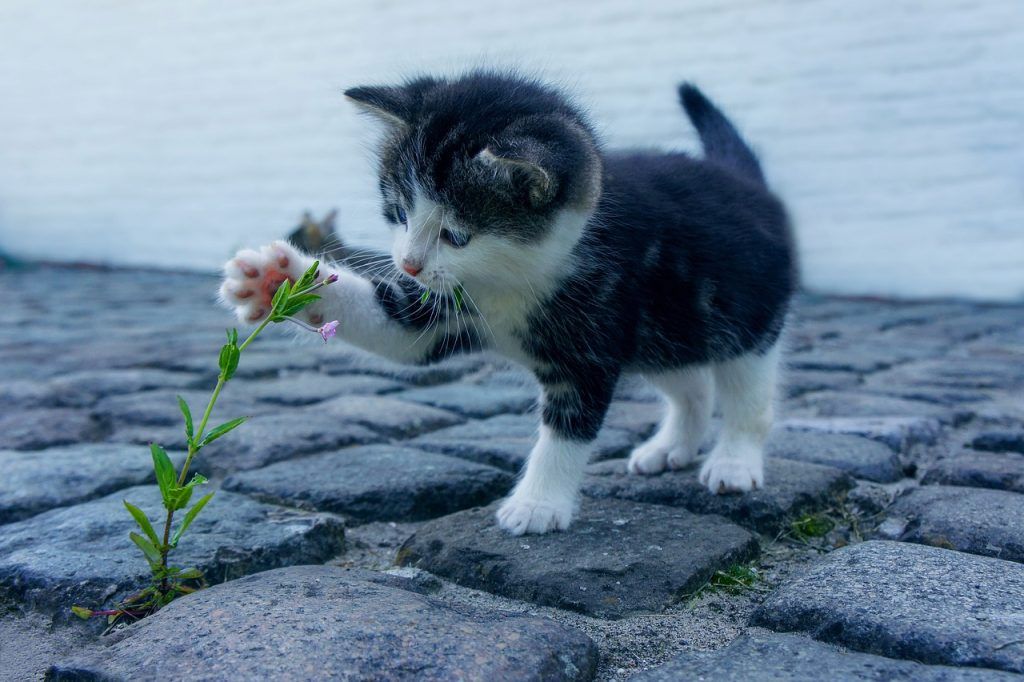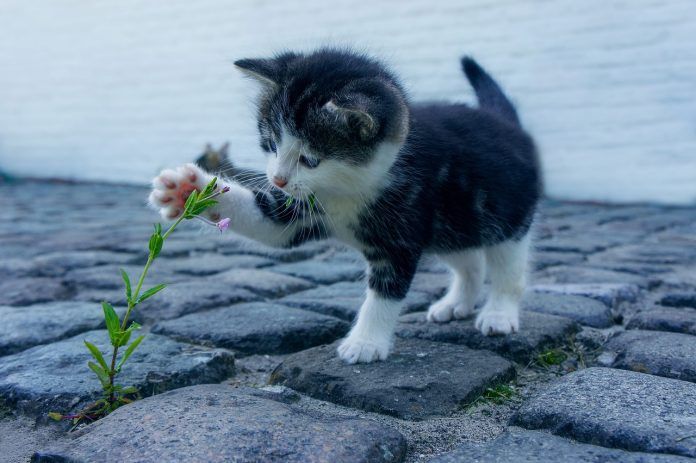Cats hold an enduring mystique of being closely connected to the spirit world. Their luminous eyes seeming to stare at invisible entities feeds folklore across cultures. But what truth lies beneath the legend? This article investigates if cats can perceive supernatural phenomena like ghosts from scientific, cultural and intuitive perspectives. By exploring cats’ advanced senses, documented behaviors and speculative quantum links, we unravel the cat-ghost dynamic. While concrete evidence remains elusive, compelling clues hint at cats accessing perceptual realms beyond human reach.
The Sensory World of Cats
To determine if cats interact with spirits, we must first understand their sensory capabilities. Felines possess remarkably acute vision adapted for hunting. A wider field of view, low light sensitivity and ability to perceive rapid movements exceed human visual faculties. Their elliptical pupils also optimize light capture and control. Scientists speculate evolved traits like UV spectrum perception equips cats to discern subtle energetic waves unseen by humans – a possible clue to spectral sensitivity.
Feline Senses and Beyond
Beyond exceptional eyesight, cats also use razor-sharp hearing and tactile sensors to map their environments. Ears swiveling independently and intricate whiskers detect stimuli imperceptible to us. Research shows cats hear frequencies up to 64 kHz compared to humans’ 20 kHz range – granting cats insight into high-pitched paranormal voices and sounds. Highly tuned multi-sensory perception offers more tools to potentially access supernatural planes.

History and Folklore
Throughout history, cats are depicted as intermediaries between physical and spiritual realms. In Egyptian mythology, the cat goddess Bastet guarded humans against evil spirits. During Medieval times in Europe, people believed cats protected homes from malevolent entities. Yet they were also feared as witches’ assistants. These cross-cultural legends rooted cats as both spirit guardians and conduits, granting them profound supernatural reputation.
Scientific Explanations
Speculative theories attempt explaining the underlying mechanisms of cats’ proposed extrasensory abilities. Some paranormal researchers posit cats detect electromagnetic frequencies linked to ghostly activity. The correlation remains unproven, but unknown sensitivities could allow cats to scientifically detect energies humans cannot. Quantum physics hypotheses delve further into cats crossing dimensional thresholds we have yet to unlock. Mainstream science remains skeptical warranting further experimentation, but cannot fully dismiss cats’ unexplained behavior.
Cats’ Behavior and Reactions
Cat guardians observe their pets displaying odd behaviors seemingly responsive to an invisible presence. Staring or meowing at vacant areas, attacking unseen entities, fleeing phantom stimuli and refusing entry to specific locations suggest cats are alerted to supernatural activity undetected by humans. However, reading feline body language within situations avoided by ghosts merits controlled study before declaring cats spirit mediums. Could cultural bias also play a role in interpreting cats’ natural quirks?
Case Studies and Anecdotal Evidence
Throughout history, cats are described reacting to ghosts and energy anomalies in haunted sites. Tales describe cats raising fur, hissing and avoiding areas of reported phenomena. At the White House, feline residents reportedly interacted with the ghosts of Abraham Lincoln and other former residents. Similar anecdotes exist across cultures, though proof remains elusive. While anecdotal stories are compelling, reproducible experiments in controlled settings could help substantiate claims of cats seeing spirits.
Quantum Mechanics and the Unseen
Emerging physics concepts evoke intriguing connections between cats and the paranormal. The famous Schrödinger’s Cat thought experiment highlights the cat existing in simultaneous states of life and death – a literal bridging of dimensions. This paradox of superposition theorizes cats transcend normal binaries and collapse quantum wave functions through observation. Applied metaphysically, the quantum lens suggests complex feline perception may allow navigating multiple realities encompassing spiritual planes.
Cultural Beliefs Across the Globe
Diverse global traditions espouse cats’ ties to the supernatural. Ancient Egyptians revered cats as otherworldly protectors. Buddhism and Shintoism see cats as wise spiritual guides. The Islamic prophet Muhammad valued cats as omens. European lore warns of cats sensing misfortune or death before humans. While varying in details, belief in cats’ metaphysical gifts perseveres cross-culturally. Tales of prophetic cats who portend danger, commune with deities, divine lost objects or drive away mischievous spirits reveal a profound faith in feline sixth sense.
Cats, Energy, and Auras
Some intuitives believe cats perceive human and environmental energy fields and auras. Their gaze seems to penetrate deeply to read spiritual essence and intention. Sensitive whiskers may detect subtle energetic vibrations. Purportedly, cats determine safe spaces by reading the surrounding aura’s emotional imprints. They purportedly absorb negative energy transmuted through purring and grooming motions. While scientifically unproven, cat empaths sense owners’ moods and health changes, indicating possible intuitive abilities. Speculation holds that cats evolved as spiritual creatures as much as physical.
Animal Intuition and Extrasensory Perception
Beyond cats alone, debates around animal ESP and ghosts continue. Skeptics require controlled proof before accepting claims of dogs and cats possessing a telepathic sixth sense or afterlife awareness. Veterinarians evoke plausible psychological explanations for companion animal oddities around the bereaved. Yet some animal stories defy natural explanation, like pets anticipating owners’ arrival or distant accidents psychically. As human perception expands, perhaps we will unlock our fellow creatures’ untapped gifts and interspecies communication. An open but critical mindset serves truth-seeking best.
Scientific Studies and Empirical Evidence
Contrarily, mainstream science finds no irrefutable evidence cats or any non-human animals detect or interact with spirits. Controlled feline vision and hearing tests discover expanded yet normal sensory ranges, not supernatural perception. Reputable attempts to quantify cats reacting to ghosts in monitored settings yield no definitive conclusions. Without measurable proof, skepticism prevails over speculation in academia. But lack of current confirming data does not wholly discredit cats’ enigmatic abilities. Possibilities exist beyond the bounds of today’s science.
Psychological and Neurological Perspectives
Animal behavior research offers plausible psychological explanations for cats’ purported psychic tendencies. Hallucinations, illusions and imagination account for some ghost sightings as the mind tries making sense of ambiguous stimuli. People anthropomorphically misread normal feline activities like grooming or exploring unseen corners. Cognitive biases also cause exaggerating cats’ abilities based on wishful thinking and cultural myth. While less thrilling, psychological perspectives ground mysterious cat behaviors in rational terms before declaring paranormal causes.
The Thin Veil Between Worlds
The supernatural controversy centers on existence questions. Do realms inhabited by ghosts, spirits and non-physical beings truly permeate our concrete world? Supernatural themes in religions, myths and lore suggest humans intuitively sense invisible dimensions beyond the veil. Throughout history, animal companions like cats are viewed as shamans traversing these boundaries as clever teachers and spirit guardians. Their frequency of reported paranormal encounters compels consideration despite lacking tangible confirmation. At minimum, the consistency of cross-cultural beliefs highlights cats’ profound connection to the elusive supernatural realm.
Paranormal Phenomena Beyond Cats
While cats prominently feature in paranormal accounts, other animals also demonstrate unexplained sensitivities that merit investigation. Dogs, horses, cows, birds and wildlife globally exhibit signs of reacting to invisible stimuli and danger based on subtle environmental cues unclear to humans. However, their exact perceptual capabilities remain ambiguous without controlled testing. Cross-species communication research shows mammals and birds possess some psychic tendencies like premonition. But the scope of awareness and how precisely it correlates with contacting ghosts and spirits awaits further evidentiary exploration to connect anecdotal dots.
Expert Opinions and Interviews
Paranormal investigators report mixed findings on cats’ role in supernatural encounters. Some find cats highly attuned to strange activity during investigations. They describe felines refusing entry to haunted rooms, tracking unseen objects and confirming impressions through intense staring. Others conclude cats largely ignore paranormal phenomena when separated from owners’ confirmation bias. Veterinarians emphasize cats’ highly reactive natures, discounting special powers. They encourage understanding cats’ baseline habits before declaring paranormal causes. Ultimately a lack of empirical data hinders consensus, though insights are deepened by cross-disciplinary perspectives.
Debunking Myths and Misconceptions
A critical eye helps separate paranormal facts versus fiction where cats are concerned. Phobias, stress or territorial behavior, not ghosts, likely explain cats avoiding specific areas. Reported trances may constitute normal napping. So-called psychic staring matches invisible objects. Urine marking territory or attacking harmless stimuli is misconstrued as banishing spirits. Claims cats sense death ring hollow next to verified stories of remaining oblivious as owners perished. While intriguing, declaring cats psychic necessitates ruling out ordinary explanations first. Mystique need not eclipse reality.
Cats and Human Psychology
The entrenched idea of cats having one foot in the spirit world perhaps reveals more about human beliefs than feline abilities. Throughout history, cats symbolize the mysterious, magical and occult in human imagination. Projecting supernatural prowess onto cats manifests people’s desire for immortality. Seeing deceased cats’ spirits can represent grieving and attachment. Cats comfort their owners through trauma and loss by offering stability amid chaos. Ultimately the cat-ghost bond highlights our own hopes, dreams and beliefs about existential questions.
Ethical Considerations and Animal Welfare
Speculation around cats interacting with ghosts raises animal ethics concerns. Asserting cats have paranormal abilities seems innocuous, but may encourage exploiting cats for financial gain by self-proclaimed pet psychics. Subjecting cats to repeated pseudo-scientific experiments or exposing them to frightening hauntings for curiosity’s sake contradicts welfare. Celebrating cats’ natural dignity and not imposing human motives is key. Resisting impulses to sensationally exploit cats’ conjectured abilities respects their rightful place in the home.
Conclusion
While cats’ purported paranormal connections captivate the imagination, conclusive evidence remains elusive. Their extraordinary sensory capabilities and documented odd behaviors hint at cats accessing perceptual realms beyond normal human reach. Yet without measurable proof, cases for cats seeing ghosts dwell firmly in the theoretical realm. Nonetheless, compelling clues within culture, quantum theory and zoology reveal the deep mystique of felines. As animals share our journey, perhaps their otherworldly wisdom enriches human knowledge. Ultimately, we must approach the supernatural unknown with curiosity blended with care.

